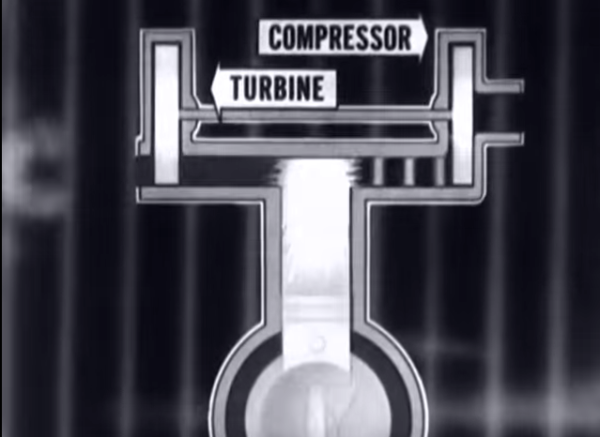A plane from Britain is met in the US by armed security. The cargo? An experimental engine created by Air Commodore [Frank Whittle], RAF engineer air officer. This engine will be further developed by General Electric under contract to the US government. This is not a Hollywood thriller; it is the story of the jet engine.
The idea of jet power started to get off the ground at the turn of the century. Cornell scholar [Sanford Moss]’ gas turbine thesis led him to work for GE and ultimately for the Army. Soon, aircraft were capable of dropping 2,000 lb. bombs from 15,000 feet to cries of ‘you sank my battleship!’, thus passing [Billy Mitchell]’s famous test.
The World War II-era US Air Force was extremely interested in turbo engines. Beginning in 1941, about 1,000 men were working on a project that only 1/10 were wise to. During this time, American contributions tweaked [Whittle]’s design, improving among other things the impellers and rotor balancing. This was the dawn of radical change in air power.
Six months after the crate arrived and the contracts were signed, GE let ‘er rip in the secret testing chamber. Elsewhere at the Bell Aircraft Corporation, top men had been working concurrently on the Airacomet, which was the first American jet-powered plane ever to take to the skies.
In the name of national defense, GE gave their plans to other manufacturers like Allison to encourage widespread growth. Lockheed’s F-80 Shooting Star, the first operational jet fighter, flew in June 1944 under the power of an Allison J-33 with a remarkable 4,000 pounds of thrust.
GE started a school for future jet engineers and technicians with the primary lesson being the principles of propulsion. The jet engine developed rapidly from this point on.












